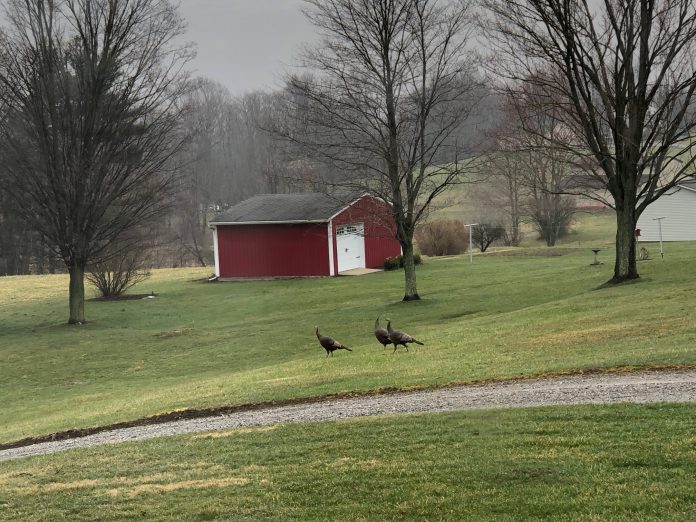COLUMBUS — The Ohio Department of Natural Resources Division of Wildlife is asking citizen scientists to report wild turkey and ruffed grouse sightings in July and August for the summer brood survey.
Turkey and grouse brood surveys are used by wildlife biologists to estimate population status. Brood surveys rely on the public to report observations of all turkeys and grouse seen in July and August, when female birds and their young are active.
Citizen scientists are encouraged to submit observations at wildohio.gov or on the HuntFish OH mobile app. Observers of wild turkeys are asked to report the number of gobblers, hens and young turkeys (poults) seen. Information collected for ruffed grouse include the number of adults and young viewed. Be sure to record the date and county where the observation occurred.
Surveys
Biologists have annually tracked summer observations of turkeys since 1962. Grouse were added to the survey in 1999. State wildlife agencies across the wild turkey’s range conduct similar surveys. Information submitted to Ohio’s brood survey help to predict population changes and guide turkey management.
Numbers
Valid reports submitted by the public in 2021 show a statewide average of 3.1 poults per hen (from 1,143 reports). The 10-year average is 2.6 poults per hen. Results from the 2020 brood survey showed a return to the long-term average after a depression in turkey nest success, and the 2021 brood data was above average.
The 2021 improvements in poult numbers were uniform across the state, although because of habitat availability turkey populations are stronger in the eastern and southern portions of the state.
Conservation success
Turkeys had disappeared from Ohio by 1904, and their return marks a conservation success story. Reintroductions began in 1956, and today turkeys are common throughout much of Ohio. Turkeys can often be seen in fields along woods, especially early in the morning.
Grouse inhabit Ohio’s heavily forested regions. Grouse occur in the greatest numbers in young, regenerating forests, especially those less than 20 years old.
Declines
Habitat loss has driven population declines since the 1980s. In addition, susceptibility to West Nile Virus has likely caused further population decline since the early 2000s.
For more information about grouse and turkey, visit the Wildlife Species Guide page at wildohio.gov.










